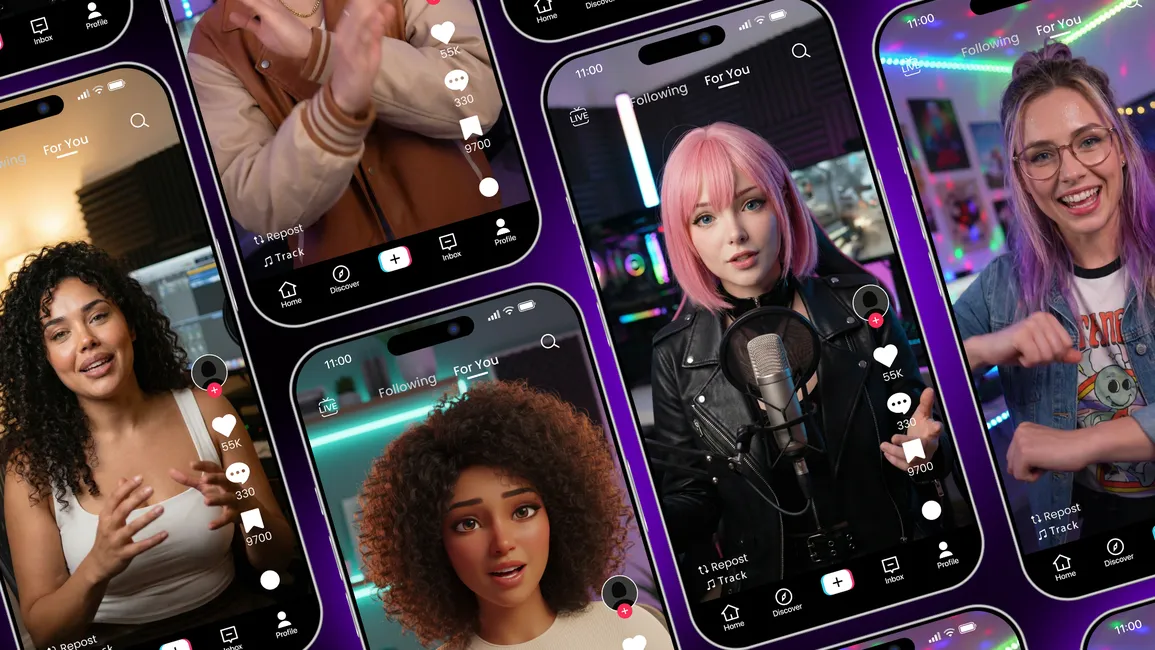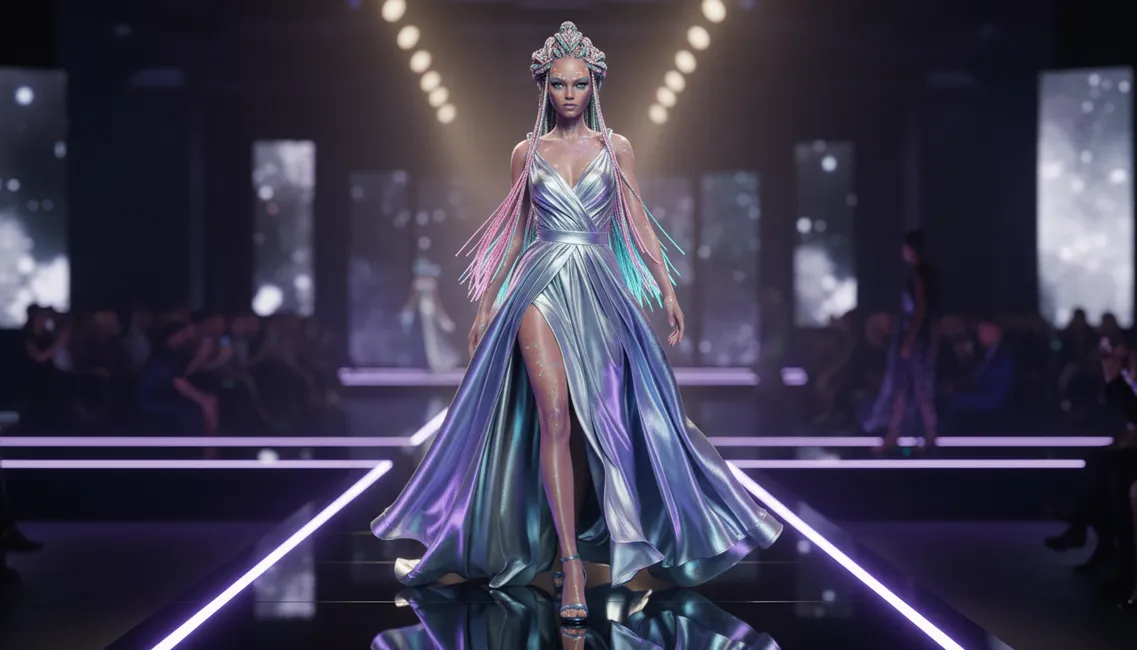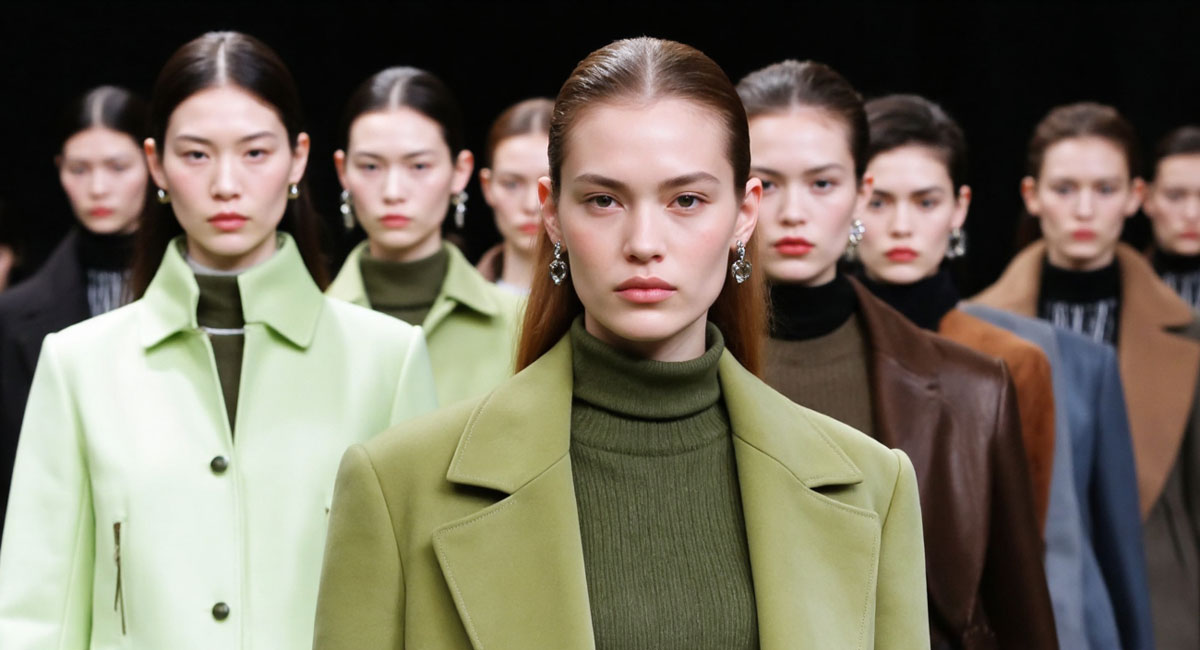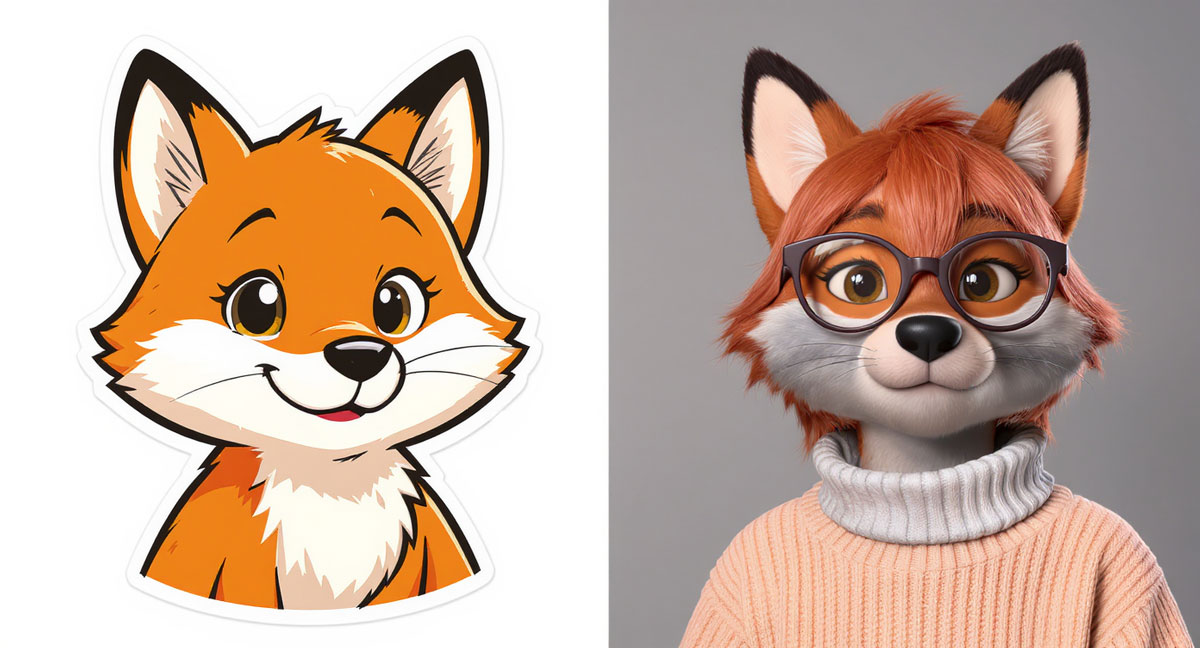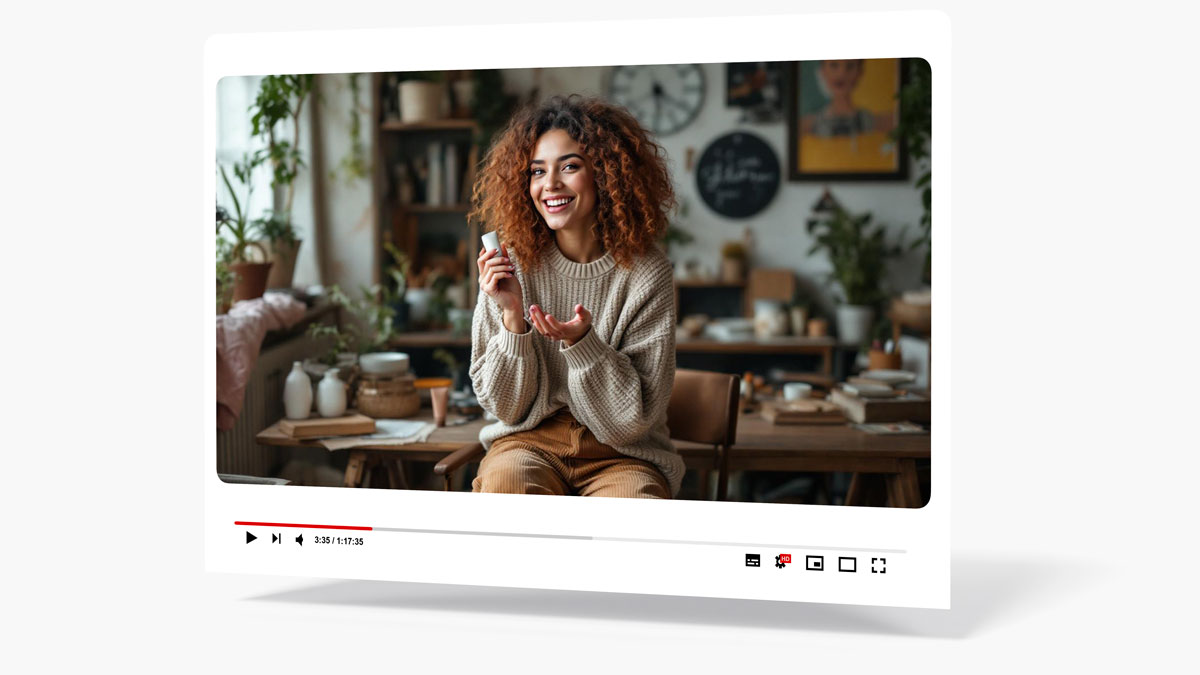
You’ve seen influencers dance, unbox, review, and go viral—but what if the most reliable star of your next video campaign wasn’t human at all?
Enter virtual influencers in video content—AI-powered personas that never miss a shoot, don’t age out of trends, and generate 3x higher engagement than their human counterparts.
With 24/7 availability and zero reputational risk, these digital personalities are changing the rules of branded video storytelling.
In fact, the global virtual influencer market is projected to jump from $6.33 billion in 2024 to nearly $298 billion in 2035.
Here, we break down how brands are weaving these characters into their video strategy—from TikTok shorts and live streams to animated music vids and AR experiences—and why you should, too.
Because here’s the truth: the human-only content days are behind us.
Buckle up and meet the future?
Market Size of Virtual Influencers in Video Content
The data shows a convincing picture of the growth of virtual influencers in video content.
The global virtual influencer market was valued at $6.33 billion in 2024 and is projected to grow at a compound annual growth rate (CAGR) of 38.4% to reach $298 billion by 2035, according to Straits Research. On the other hand, it is anticipated that the traditional influencer market will expand at a significantly slower rate of 17.9% during the same time frame.
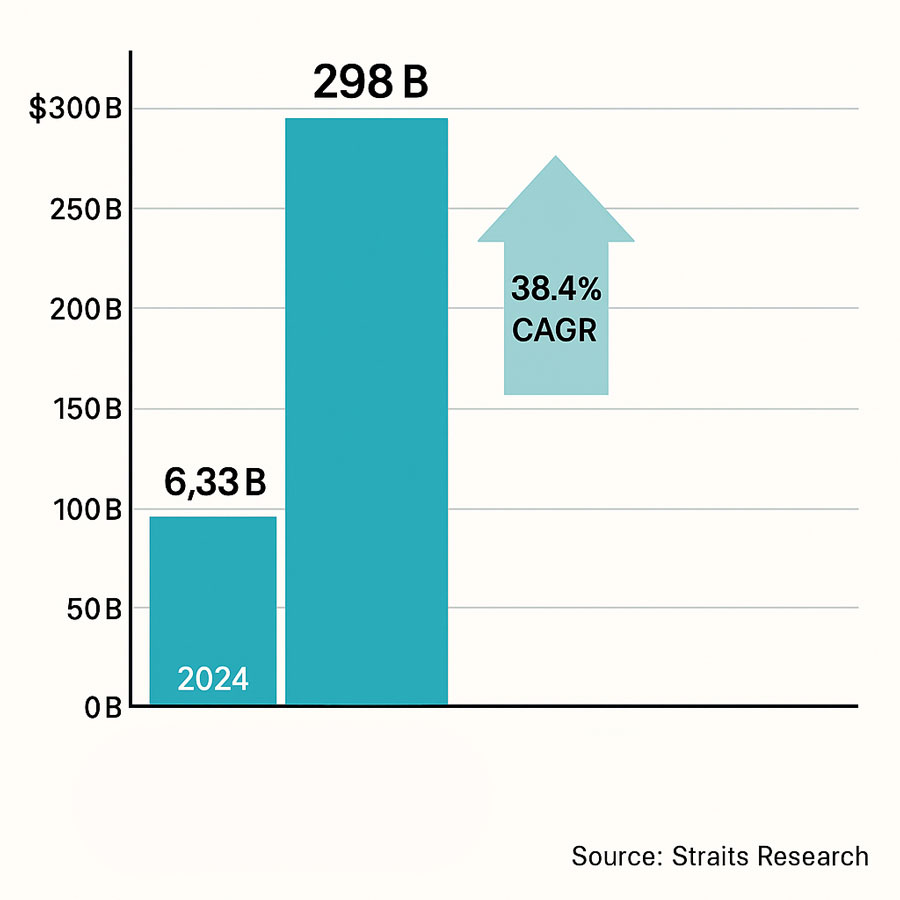
This significant change reflects a growing brand preference for more scalable, cost-efficient, and controlled influencer models, especially in video-first campaigns.
Due to platform investments in AI video tools and creator economies focused on short-form content, it is anticipated that ad spend on virtual influencers in video content will double between 2024 and 2025. Budgets are being reallocated by marketers.
Platforms & Adoption Trends
Virtual influencer marketing relies heavily on video-first platforms, each of which has special advantages when it comes to incorporating artificial personalities.
Not only are today’s top channels accommodating virtual influencers, but they are also optimizing for them, offering everything from short-form entertainment to real-time interaction.
TikTok: The Birthplace of Virtual Virality
The format of TikTok is specifically designed for virtual influencers in video content. Regardless of whether the face on screen is human or not, the algorithm rewards creativity and interaction. Trending dances, humorous skits, and narrative shorts are performed by virtual influencers, frequently with a level of polish that distinguishes them.
Additionally, virtual characters can directly appear in user videos or branded content campaigns thanks to TikTok’s filters and augmented reality tools, transforming passive viewers into engaged participants.
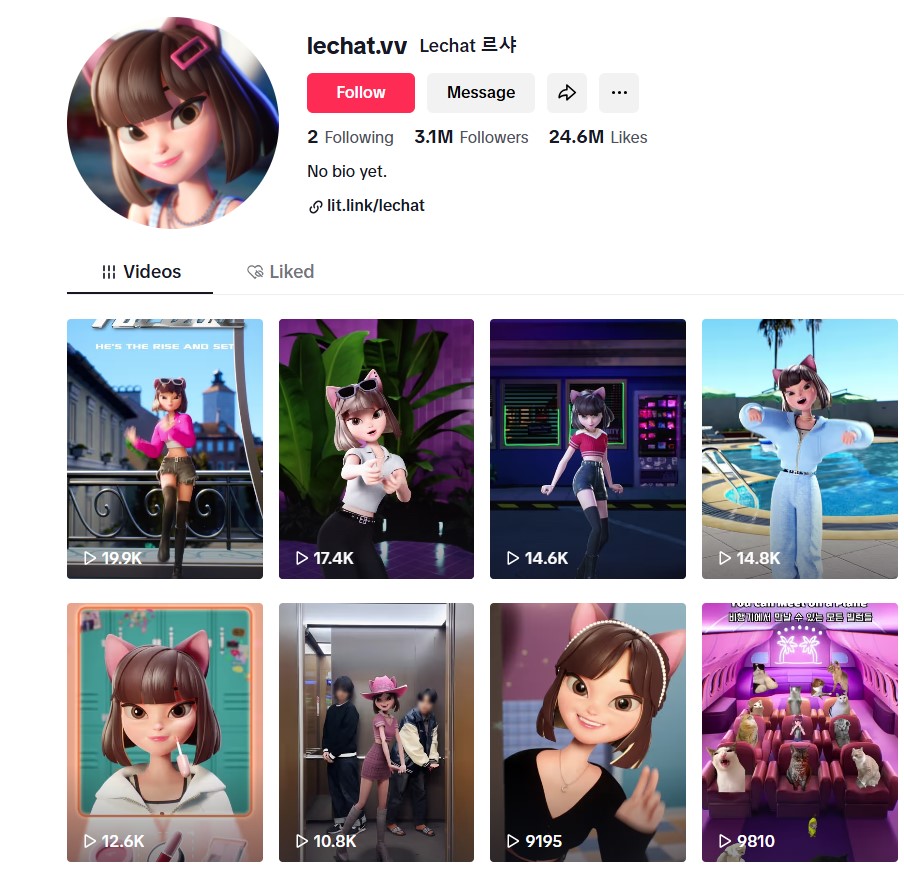
FNMeka and lechat.vv are two famous Virtual Characters in TikTok.
Youtube
YouTube Shorts has emerged as the platform for structured, episodic storytelling, particularly for brands creating continuous virtual influencer narratives, while TikTok is the leader in rapid virality. As of Q1 2024, the platform had over 70 billion views per day on Shorts, making it a vital video ecosystem where artificial personalities can establish cross-channel presence and long-term engagement.
For Example, AI Angelica delivers tutorial-style shorts about tech and social commentary, targeting younger audiences with an educational slant.

Brands are following suit. For example:
- Riot Games uses animated virtual band K/DA to release teaser music clips and character-driven lore content.
- Barbie Vlogs, created by Mattel, turns the iconic doll into a serialized virtual persona, helping Mattel reach younger viewers through life advice and motivational shorts, often tied to product drops.
Instagram Reels: Polished, Branded, and Shareable
Instagram Reels is where virtual influencers go glam. With a heritage rooted in lifestyle content and aesthetic curation, Reels empowers brands to present virtual influencers in video content as editorial models, fashion icons, or polished presenters.
Branded product placements, animated makeup tutorials, or digitally rendered day-in-the-life Reels can perform remarkably well—especially when paired with Instagram’s commerce integrations and influencer tagging tools.
Twitch: The Future of Real-Time AI Hosts
Twitch is where virtual influencers become interactive personalities. With motion capture and synthetic voices, digital characters can livestream in real time—hosting game streams, product demos, or even audience Q&As.
This platform is particularly powerful for eSports, entertainment brands, and tech companies looking to blend synthetic storytelling with live interaction.
Industry Usage
The use of virtual influencers is growing across industries as they progress from being novel to essential. Virtual influencers in video content are revolutionizing how brands engage with digital native audiences, scale storytelling, and preserve message coherence across international markets, from high fashion to gaming and education.
The top industries that use virtual influencers are listed below, along with how they are utilizing video to increase engagement and outcomes.
Fashion: The Digital Runway Stars
The fashion industry was among the earliest to embrace virtual influencers. Video content featuring CGI models and digital fashionistas enables brands to showcase collections without the constraints of physical photo shoots, location permits, or human talent availability.
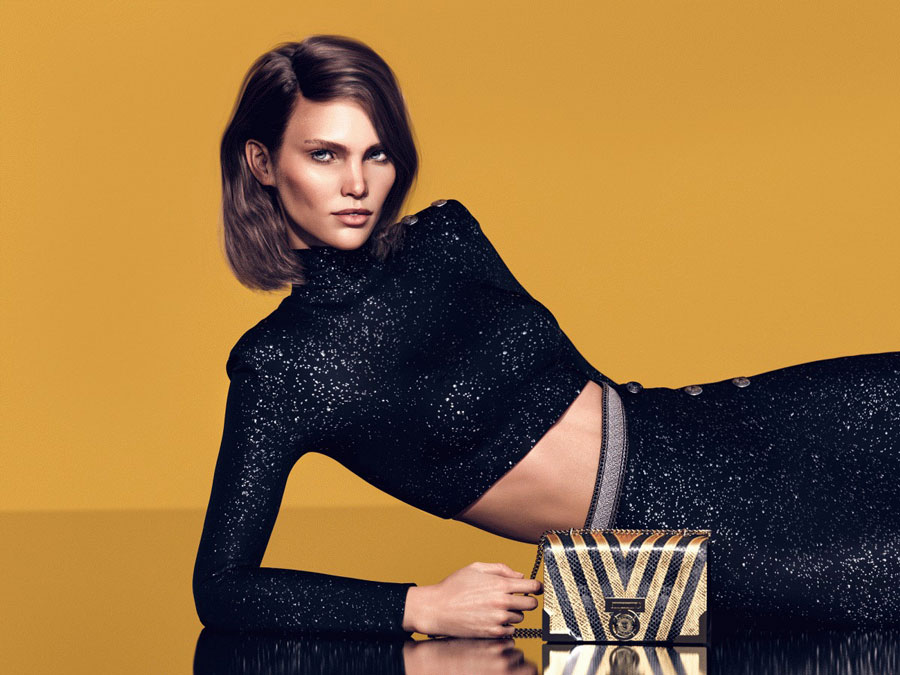
- Lil Miquela partnered with Prada, appearing in animated fashion week videos and digital campaigns.
- Shudu—the world’s first digital supermodel—modeled for Fenty Beauty and Balmain, starring in Reels, Shorts, and editorial-style clips.
- Noonoouri, a cartoon-style icon, collaborates with Versace and Dior, often via stylized vertical video lookbooks, fashion week livestreams, and virtual couture reels.
Beauty: Influencers Without Imperfections
In beauty, virtual influencers in video content are used for tutorials, product demos, and animated skincare routines—allowing brands to control lighting, tone, and pacing with surgical precision.
- CGI characters like Imma promote skincare and makeup products through daily routine videos on Instagram Reels and YouTube.
- Lu do Magalu, a retail mascot from Brazil, regularly publishes beauty and grooming content—featuring virtual try-ons and product reviews.
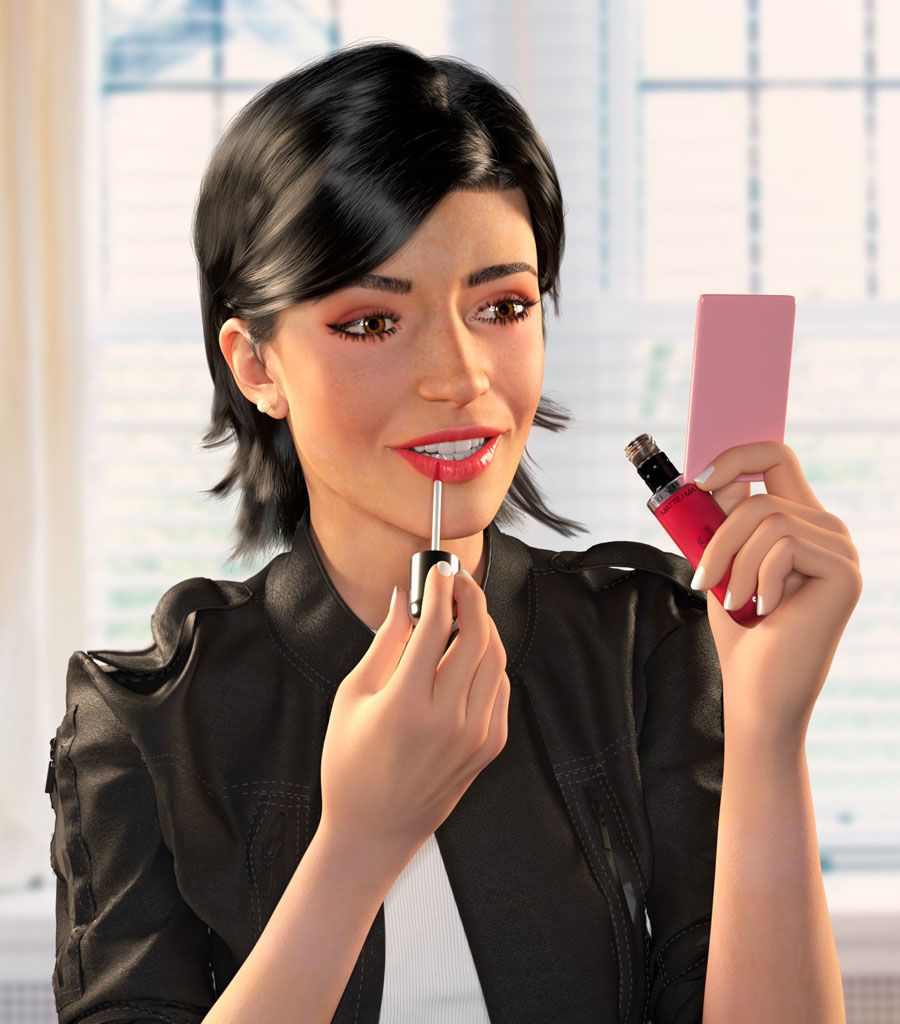
With face mapping and AR capabilities, these influencers can simulate product use and effects in ways human creators can’t—offering hyper-realistic, branded demonstrations.
Gaming: NPCs Become Brand Ambassadors
In gaming, virtual influencers are both performers and playable characters. They host livestreams, narrate trailers, and even act as interactive avatars within the games themselves.
- K/DA, the virtual K-pop group by Riot Games, appears in game intros and music videos that double as advertising campaigns.
- Code Miko streams gaming content on Twitch using mocap tech, blending character-driven humor with real-time engagement.
- Apoki often appears in dance-oriented gaming formats and music-based metaverse events.
Video content here includes livestreams, highlight reels, and branded cut-scenes that live both inside and outside the game world.
Music: CGI Meets MTV
Virtual musicians like APOKI, K/DA, and Seraphine from League of Legends are redefining pop stardom. They appear in animated music videos, concert livestreams, and dance challenges across platforms.
- APOKI’s “Space” music video hit over 1 million YouTube views, with spinoff TikToks and Shorts expanding its reach.
- Seraphine was introduced via video diaries and song snippets before launching a full-scale video campaign.
These virtual stars can sing, dance, and tour without ever setting foot on a stage—making them ideal for high-frequency, video-centric engagement.
Education & Social Impact: Teaching with a Digital Face
Virtual influencers are increasingly used to explain complex topics, especially to younger audiences who are more receptive to character-driven content.
- The World Health Organization used virtual influencer Knox Frost to promote COVID-19 safety tips on TikTok and Instagram.
- Educational creators use characters like Maya Gram or AI Angelica to break down STEM concepts, often via animated explainer videos, Q&A Reels, and narrated video posts.
In education, authenticity matters—but so does clarity. Virtual influencers can simplify messaging and maintain consistency across languages and demographics.
E-Commerce: Always-On Digital Hosts
Brands like IKEA Japan and Casas Bahia have introduced persistent virtual influencers as shopping assistants and video content creators.
- Imma starred in IKEA’s digital home tour campaign in Harajuku—publishing Reels and Stories to promote seasonal products.
These influencers act as virtual sales associates, guiding users through product benefits, demos, and shopping journeys using snackable, search-optimized video content.
Video-Specific Use Cases
What does it look like when brands use virtual influencers in real campaigns? You’ve seen the hype. They simply transform pixels into performers.
Virtual influencers in video content aren’t just appearing; they’re influencing the formats themselves, from TikTok loops to full-length music videos. This is where they’re having the most impact.
Short-Form Content (TikTok, Reels)
Do you want content that is quick to go viral and makes people stop scrolling? Virtual influencers are most effective in this situation.
Virtual characters blend in with ease, performing dances, making jokes, and mastering transitions with no need for retakes thanks to platforms like TikTok, Reels, and Shorts that are driving fast trends. No timetable. No poor lighting. Simply limitless possibilities.
Consider Nobody Sausage, an animated sausage that dances and has millions of fans. Or Lil Miquela, who styles cutting-edge edits in quick 15-second bursts. These are attention-getters, not merely novelty acts.
Why does it function? Since these characters instantly adopt new trends, your brand doesn’t have to rely on the availability of talent or a fortunate day on set.
Livestream Shopping
Let’s now discuss ROI. Are you looking for a host who is not camera shy and who is well-versed in your product script? Presenting the virtual host of the livestream.
They can be found on Twitch and Douyin, guiding viewers through product details, responding to queries in real time, and initiating one-click purchases. Every day, influencers like Lu do Magalu and CB (Casas Bahia) livestream sales with charm, reliability, and clickable assurance.
There is no guesswork involved in this interactive commerce.
Branded Mini-Series or Music Videos
Some virtual influencers don’t just perform—they headline. Think multi-part video arcs, serialized storytelling, and cinematic animations that build emotional investment.
- K/DA by Riot Games drops stylized music videos that double as brand lore.
- Barbie Vlogs from Mattel blend product showcases with advice-driven storytelling.
- Apoki, the K-pop rabbit, racks up millions with choreographed music video drops.
If you’ve got a story to tell—or a product to anchor in a narrative—this is where your digital character goes from tool to icon.
Interactive & AR Videos
Want your audience to talk back? Meet your future.
With real-time engines like Unreal and AR integrations, your virtual influencer becomes touchable—responding to voice prompts, conducting live Q&As, or showing up inside your customer’s room through a mobile lens.
Dream Farm has built virtual meet-and-greets, on-site character kiosks, and scripted AI personas that speak multiple languages—all triggered through simple camera or mic input.
If your brand thrives on engagement, virtual influencers in video content make interactivity scalable.
In-Game & Metaverse Videos
Let’s go deeper. Inside games, inside virtual worlds, inside your customer’s headset—virtual influencers are already there.
Characters like Seraphine (League of Legends) started as lore videos, dropped music clips, then entered the game world itself. In Roblox, Fortnite, and Spatial, we’re seeing influencers lead tours, perform concerts, and appear as animated NPCs.
For brands with one foot in the metaverse, virtual influencers become your always-on guide—speaking your message, inside your world, with perfect timing.
Still thinking this is years away? Too risky? Too “sci-fi”?
The truth is: your competitors may already be doing it.
And if you’re wondering where to begin—well, that’s why we’re here. At Dream Farm Agency, we don’t just talk about virtual influencers. We build them. Script them. Animate them. Launch them.
Ready to test what your brand looks like in motion? Let’s create something remarkable.
Case Studies
Numbers don’t lie—and when it comes to performance, virtual influencers in video content are no longer just “experimental.” They’re producing real results across industries, platforms, and formats. Below are five standout campaigns launched between 2023 and 2025 that prove the potential of virtual personas to drive reach, clicks, and conversions.
Nobody Sausage × Amazon Prime Video
Platform: TikTok, Instagram Reels
Format: Branded memes + short-form video challenges
Results:
- 7.4M TikTok views across 3 videos
- 15.3% engagement rate
- #NobodyWatchesPrime trended for 2 days
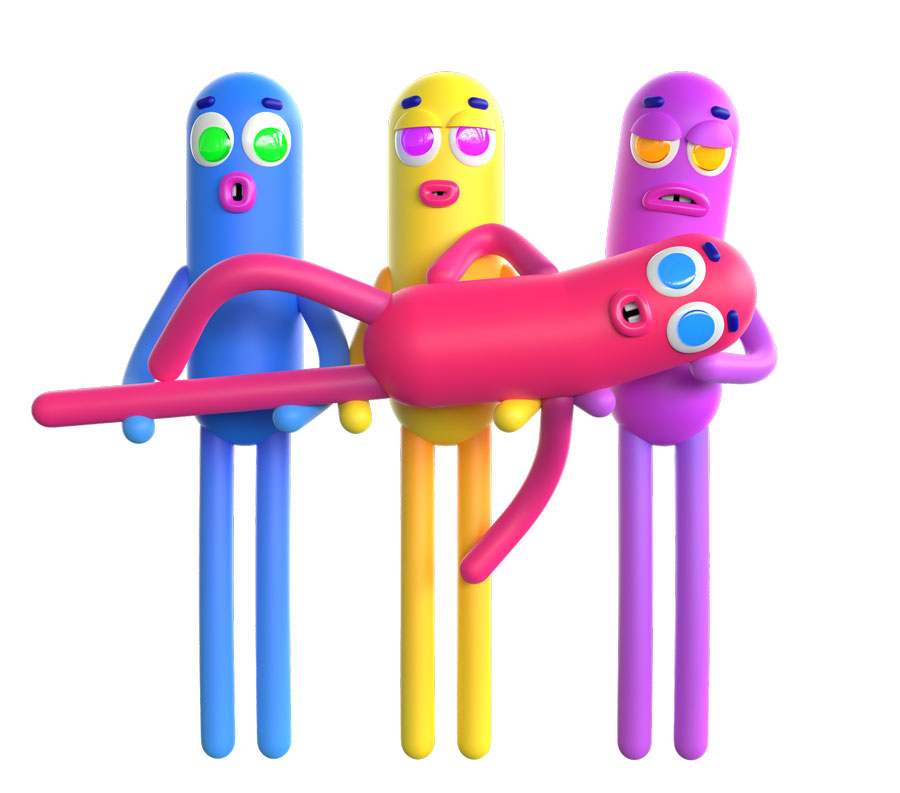
Amazon teamed up with Nobody Sausage to promote new comedy titles. The animated sausage joined trending dance and lip-sync challenges—but with dialogue and overlays referencing Prime shows. The campaign used absurd humor to drive virality, and it paid off with above-average retention and shares.
Hailey (Virtual Host for Maxi-Cash)
Platform: YouTube Shorts, Instagram Reels, In-store AR displays
Format: Financial advice reels + product explainer videos
Results:
- 1.1M video views across 8 short videos
- +35% increase in in-store visits
- 4x time-on-site increase on Maxi-Cash product pages
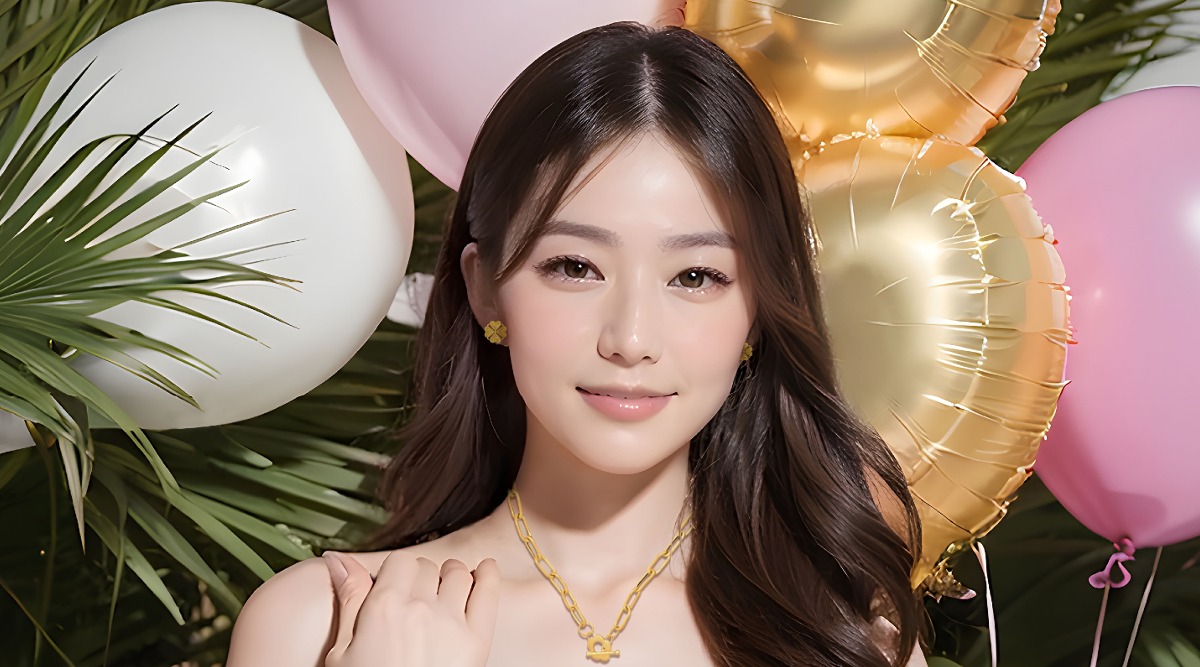
Maxi-Cash, a Singapore-based financial services company, built a custom AI-powered virtual influencer named Hailey. She starred in a series of engaging financial tip videos explaining loan options, gold valuation, and jewelry savings. Bonus: customers could also interact with her at retail kiosks via touchscreen AR.
Guggimon × Fortnite Collab (Superplastic)
Platform: YouTube, Twitch, Meta Shorts
Format: Trailer drops + livestream takeovers + meme recaps
Results:
- 9.6M total video views
- 120K concurrent Twitch viewers during launch
- Epic Games reported a 13% skin adoption rate
Superplastic’s anarchic rabbit character Guggimon became a Fortnite skin in 2023. But the brand didn’t stop there—they dropped a series of stylized campaign videos, including Guggimon’s “day-in-the-life” in the game. The character also “took over” Twitch creator channels to co-host playthroughs. The result? Hype that outlasted the drop itself.
Qai Qai × Target (Toy & Kidswear Launch)
Platform: YouTube Shorts, Instagram Reels
Format: Branded mini-series + AR dance videos + bedtime stories
Results:
- 4.2M YouTube views (3-part video story)
- 6.1% click-through to product pages
- $680K in toy and sleepwear sales during first 3 weeks
Qai Qai, the virtual doll co-managed by Serena Williams, fronted a Target campaign combining playful AR experiences, animated storytelling, and video tutorials. One part playmate, one part brand mascot, Qai Qai helped make the campaign both emotionally sticky and retail-ready.
Leya Love × UN SDGs Awareness Campaign
Platform: Instagram Reels, YouTube
Format: Video poems + nature vlogs + voice-over explainer clips
Results:
- 2.3M combined views
- 30% increase in follower base over 60 days
- Campaign mentioned in 14 sustainability newsletters
Leya Love, a digital ambassador for the World Awareness Movement, ran a video-first campaign to promote the UN’s 17 Sustainable Development Goals. Her team published poetic shorts, narrated explainer clips, and “green checklists” in animated form—boosting eco-literacy and shareability.
What Do These Campaigns Tell Us?
- Virtual influencers in video content are format-flexible. From meme reels to documentary-style explainers, they fit any strategy.
- They outperform in niche markets where tone control and content speed matter—finance, kids, entertainment, and cause-based branding.
- Narrative and character development create return viewers. These aren’t just assets—they’re growing IPs.
- They’re measurable. Click-through, dwell time, even skin adoption rates—yes, you can quantify the ROI.
So now that you’ve seen what’s possible, let’s break down what it actually takes—creatively and financially—to bring a virtual influencer campaign to life.
Budget Tiers & Content Creation Models
Building a virtual influencer used to sound like a futuristic luxury. Not anymore. Whether you’re launching a niche campaign or building a long-term digital brand asset, there’s a budget pathway for you.
In this section, we’ll break down what brands are actually spending—and what you can expect to get at each investment level.
Budget Ranges
Indie Tier
You’re experimenting. Maybe it’s your first time using virtual influencers in video content, and you want to dip a toe without draining your entire Q2 budget. That’s what this tier is for.
At this level, brands usually:
- License or collaborate with existing virtual influencers
- Use pre-built AI tools for generating images, short clips, or voiceovers
- Produce limited video formats—like a few Reels or Shorts
It’s fast, accessible, and perfect for short-term promotions, pilot programs, or MVP (minimum viable persona) tests.
Ideal for: social-first brands, startups, or seasonal campaigns.
Mid-Tier
You’ve moved past testing—and now you want a scalable virtual character with repeat use. This tier gives you custom design, basic narrative development, and video assets that feel polished.
Typical inclusions:
- A custom-designed influencer (2D or 3D)
- One or more animated video assets (e.g., Shorts, Reels, explainer videos)
- Character rigging for future reuse
- Social media post packs and visual identity
This is where things start to get serious—and reusable.
Ideal for: mid-sized brands, product launches, regional market activations.
Enterprise Tier
Now you’re building an IP. This isn’t just a virtual influencer—it’s a brand extension.
At this level, you’re investing in:
- High-fidelity 3D modeling (CGI-level quality)
- Motion capture, voice synthesis, and full animation pipeline
- Serialized content production (e.g., multi-part Reels, music videos, livestreams)
- AI integration for interactivity (chat, live hosting, AR modules)
It’s a bigger commitment—but it pays off in long-term flexibility and brand consistency. You own the character, the style, the tone—and every piece of content they create.
Ideal for: global brands, franchises, IP-driven businesses, and digital-first entertainment.
Creation Models
You’ve got the budget—but how do you actually build a virtual influencer? You’ve got options. Each model comes with trade-offs: speed vs. control, cost vs. quality, ease vs. scalability.
Let’s break down the three most common paths brands take when producing virtual influencers in video content.
1. In-House via AI Platforms
This is the “build-it-yourself” approach. You use AI tools or character-generation platforms to create a digital persona from templates, images, or prompts.
Pros:
- Fast to launch
- Low cost
- Good for testing
Cons:
- Limited customization
- Generic appearance
- Often not reusable across complex formats
Popular tools: Synthesia, Ready Player Me, ZMO.ai, Rephrase.ai
Best for: Small campaigns, fast A/B testing, budget-restricted teams.
2. Studio-Based CGI Production
Now we’re talking fidelity. This model involves working with a digital studio that creates high-resolution 3D models, animations, and visual content—often used in gaming, film, and luxury campaigns.
Pros:
- Highly realistic visuals
- Full creative control
- Ideal for serialized content or premium brands
Cons:
- Higher cost
- Longer production timelines
- Requires dedicated collaboration and review cycles
Used by brands like Fenty Beauty (Shudu) and Prada (Lil Miquela).
Best for: Fashion, entertainment, luxury, AAA marketing initiatives.
3. Agency-Built Character Development (Like Dream Farm Agency)
Here’s the sweet spot: you partner with a specialized agency (👋 that’s us) that blends creative, technical, and strategic execution from concept to launch—and beyond.
We work with you to:
- Design a character that fits your brand persona
- Write their backstory and narrative arc
- Produce multi-format video content
- Manage deployment across platforms
- Build AI integration if needed (chatbots, voice, AR, livestreaming)
Pros:
- End-to-end execution
- Storytelling + tech synergy
- Reusable across campaigns
- Faster than building in-house
- Scales with your needs
Cons:
- Higher than DIY, but more efficient than studio-only
Best for: Brands looking for long-term growth, IP development, and high-impact campaign rollout.
Ready to move beyond templates? That’s where we come in. At Dream Farm Agency, we’ve built animated influencers, hyperrealistic 3D personas, and interactive virtual hosts—tailored for every platform and audience.
Next up: let’s talk numbers. What’s the return? What should you actually measure?
Audience Perception & Ethical Concerns
Let’s be honest: virtual influencers might be smart, scalable, and incredibly engaging—but they also raise some eyebrows.
Consumers want connection, not deception. Regulators want transparency. And your brand? You want innovation without backlash.
In this section, we’ll walk through the biggest ethical friction points around virtual influencers in video content, and how to navigate them like a pro.
Authenticity & Transparency
Let’s start with the big one: Are people okay with knowing it’s not a real person?
Answer: Yes—but only if you’re upfront.
The FTC (U.S.) and ASA (U.K.) now require clear disclosures when influencers (virtual or human) promote sponsored content. That means:
- Marking paid videos clearly with #ad or #sponsored
- Indicating when a virtual influencer is AI-generated or CGI
- Being transparent about what the character represents (brand mascot, creator collab, etc.)
Why does this matter? Because perceived authenticity directly impacts trust and conversion. In fact, 39.1% of consumers say “realness” affects whether they’d purchase after an influencer recommendation (source: Influencer Marketing Hub).
So here’s your rule of thumb: Fake face? Real honesty.
Manipulation & Misinformation Risks
It’s easy to assume virtual influencers are immune to scandal. But let’s not get comfortable.
Even virtual characters can be programmed (intentionally or accidentally) to spread:
- False product claims
- Biased or manipulative scripts
- Synthetic endorsements that sound authentic but aren’t grounded in reality
There’s also the deepfake dilemma. Audiences are getting increasingly good at spotting “fake realness,” and any use of synthesized voice, likeness, or motion capture without disclosure can trigger blowback.
Your move?
Script responsibly
Fact-check everything
Use voiceover AI ethically
Treat your virtual influencer like a public-facing team member
If your character has a “voice,” it better reflect your brand’s values—and legal obligations.
Representation & Inclusivity
Here’s a challenge you might not see coming: Are you designing your virtual influencer through a biased lens?
Virtual personas are often idealized—perfect skin, symmetrical features, and slim proportions. But when every brand chooses a digitally flawless CGI model, the industry ends up reinforcing beauty standards we’ve fought to diversify.
There’s also gender bias. Some characters exaggerate femininity or masculinity in ways that flatten personality into stereotype. Others erase cultural identity altogether.
You can do better. And your audience expects you to.
Pro tips:
- Design characters with diverse ethnicities, genders, and body types
- Avoid perfection-for-perfection’s-sake
- Build story arcs that showcase personality, not just appearance
- Hire DEI consultants if you’re unsure—seriously
It’s not about political correctness. It’s about building virtual influencers in video content that reflect the real, complex world your customers live in.
Next up: You’ve seen the risks—now let’s talk execution. Should you rent a virtual influencer? Or build your own digital star from scratch?
How to Get Started
By now, you’ve seen what virtual influencers can do: drive engagement, tell stories, sell products, and scale across platforms. But how do you actually get started?
Should you borrow one that already exists? Or build a custom character that’s 100% yours?
Let’s map out your options.
Collaborate vs. Create Your Own
Option 1: Collaborate with an Existing Virtual Influencer
Fast. Flexible. Familiar. This is the low-friction way to launch a campaign with virtual influencers in video content.
You partner with a virtual personality (or their agency), just like you would with a traditional influencer. You get access to:
- Their existing follower base
- Their video creation style
- Their voice, look, and backstory
Best for:
- Brands looking for quick reach
- Seasonal or trend-driven campaigns
- Collabs with creators targeting niche audiences
Watch out for:
- Less control over visual style and messaging
- Higher CPM in some cases
- Licensing limits on long-term content reuse
Option 2: Create Your Own Virtual Influencer
This is your brand’s digital double—a character you control completely.
You define:
- The name, backstory, and personality
- The visual identity (style, voice, movement)
- The platforms, scripts, and long-term strategy
It’s more work up front, but it pays off in flexibility, scalability, and ownership.
Best for:
- Long-term brand-building
- Always-on social media presence
- Content ecosystems (video, AR, livestreams, even metaverse)
Need help creating one? That’s exactly what we do at Dream Farm Agency.
If you’re not sure where to begin, that’s where agencies like Dream Farm Agency step in. We help you build the creative foundation and the technical pipeline.
Whether you’re collaborating with an existing character or building one from scratch, our Virtual Influencer Marketing: A Complete Guide lays out the full journey—from concept to campaign rollout.
Conclusion
We’ve covered the platforms, the formats, the budget tiers, the metrics—and yes, even the ethics.
If there’s one thing to take away, it’s this: virtual influencers in video content aren’t replacing human creators. They’re expanding what’s possible.
They give brands a new kind of creative leverage—one where you control the voice, the visuals, the timing, and the tone. No sick days. No brand misalignment. No influencer drama. Just scalable storytelling that performs across every platform, every time.
But to unlock the full potential, you need more than just a 3D model or a talking avatar. You need:
- A purpose
- A plan
- And the right partners
Whether you’re experimenting with a short-form collab or building your own next-gen brand persona, now is the time to act. Not next year. Not “when the market’s ready.”
Because the shift is already happening—and the brands getting ahead today will be the ones shaping what audiences expect tomorrow.
Ready to see what your virtual influencer strategy could look like in motion?
At Dream Farm, we don’t just build characters—we build content engines that grow with your brand.
Let’s create your next video superstar.

HosseinDigital Marketing Expert
